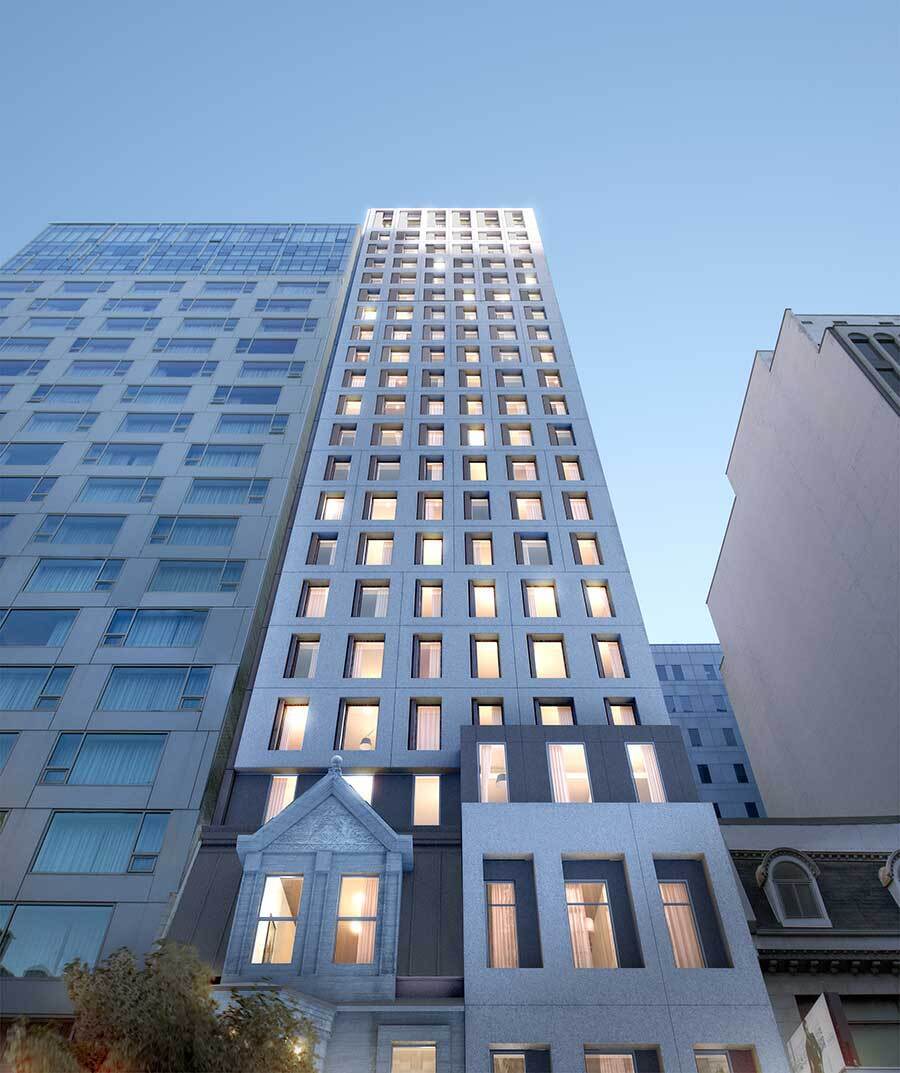Since the dawn of time, shelter from the elements has proven a much-needed ally in the battle for survival. Now one company has extended that realization to construction sites, creating a method of building in a completely enclosed environment that's particularly useful in harsh climates.
The Upbrella system, in use since 2016, sees a team of workers build a foundation and a roof and then complete each floor while working under the roof. Synchronized hydraulic lifts raise the roof, which can weigh about 100 tons, upwards after each floor is completed. The process continues as construction crews toil in completely enclosed environments.
The patented system allows construction workers to progress on a build regardless of the elements, whether it be intense heat in New Mexico, snowstorms in Winnipeg, hard rains of Louisiana or anywhere that weather can cause inconveniences, delays or other setbacks.
The roof-first approach also comes with the bonus of eliminating the need for construction cranes that can cause inconveniences in cramped urban spaces and in other difficult locations. The approach allows any lifting to be done through the center of the structure during construction.
Three members of the Larouche family, father Gilles, son Joey and cousin Justin, hatched the approach to building roof-first about 15 years ago. Gilles was frustrated by the challenges that Montreal’s cold weather, rain and snow were presenting to some of the projects he was working on. The three put their heads together and figured out the new method of building under the roof.
They received some financial support to tinker with the idea and eventually got their chance to try it in real life in 2016 when they were hired by Montreal developer Luc Poirier to complete a 47-unit 12-floor Rubic tower at 1115 Rene Levesque Blvd. E. near downtown Montreal.
There are other companies that are also innovating. Some construction methods attempt to avert the dependence on cranes by creating large sections of a project offsite, such as the Australian firm Hickory. Others, like U.K.-based Kone, employ what is described as a JumpLift system, which maximizes the use of elevator shafts within the buildings to transport materials upwards.
Each has their downside. In Upbrella’s case, its reliance on hydraulic lifts means the hydraulic fluids can be subject to contamination. Impurities that enter the system can prevent the flow required to hoist a weight higher. Hydraulic lifts can also overheat, so operators must be wary of temperature control.
Memorable Moment
Even so, the system has been working for the Upbrella team. Watching the roof raised for the first time on the site was a memorable moment for them.
“From an engineering point of view we knew that it would work. We did all of the calculations,” company executive Jacques Gauthier told CoStar News. “But I admit that it was a special moment seeing it go up. The system raises the roof very slowly. It worked the first time and has worked every time since. The client sees that first lift and then after that it starts seeming routine.”

Upbrella has not only used its technology to create new buildings but it has also proved useful in projects that add floors to existing properties, such as its addition of several floors to the Hotel Germain at 2050 Mansfield in downtown Montreal.
Gauthier notes that the Upbrella method allows a developer the flexibility to start a building small and make it larger later. “If a developer wants to build a 40-floor tower and the market goes bad, we can stop at 20 floors and do the rest after the economy improves. It’s the equivalent of a put-and-call system but on large-scale construction,” said Gauthier.
Upbrella has also recently completed the Werkliv on Peel building on narrow Peel Street in downtown Montreal, in a spot where authorities would not have permitted cranes to block the roadway for an extended time.
The company also employs its technology to do facade retrofits. It is in the process of doing at the major overhaul of 600 de la Gauchetiere W.
Upbrella now has its toes in the European market as well and has completed work on the Carmelha Tower, a cross-laminated timber building in Monaco.
The company owns patents on the technology in about 15 countries, including Brazil, South Korea and several European countries and has a licensed representative in Toronto and another in France. Builders in countries where Upbrella does not hold a patent are free to use the technology but those who start marketing it in the countries where its patents are in place could be liable for infringing on that patent.
The company could have its hands full in years to come with facade retrofits alone, as many structures built before 1990 are due for a new shell either due to climate change requirements or general upgrades. Gauthier believes that such projects could eventually lead the small company of 10 employees to eventually grow to be working on 100 projects in the world’s 50 largest cities.
